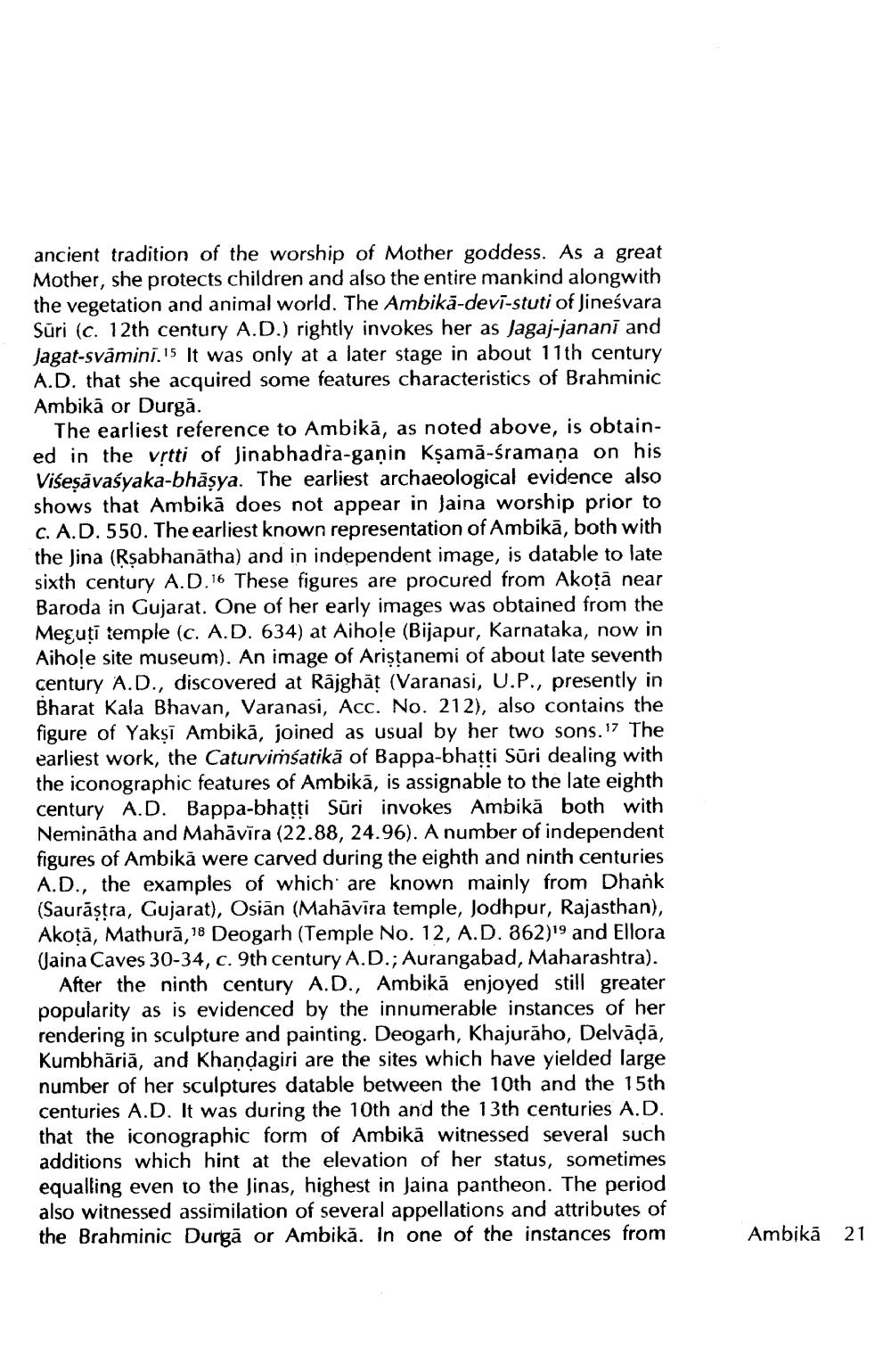________________
ancient tradition of the worship of Mother goddess. As a great Mother, she protects children and also the entire mankind alongwith the vegetation and animal world. The Ambika-devi-stuti of Jinesvara Suri (c. 12th century A.D.) rightly invokes her as Jagaj-janani and Jagat-svåmini. 15 It was only at a later stage in about 11th century A.D. that she acquired some features characteristics of Brahminic Ambikā or Durgă.
The earliest reference to Ambikā, as noted above, is obtained in the vrtti of Jinabhadra-ganin kşamā-śramana on his Viśeşāvaśyaka-bhāşya. The earliest archaeological evidence also shows that Ambikā does not appear in Jaina worship prior to c. A.D. 550. The earliest known representation of Ambikā, both with the Jina (Rsabhanātha) and in independent image, is datable to late sixth century A.D. 16 These figures are procured from Akotā near Baroda in Gujarat. One of her early images was obtained from the Meguti temple (c. A.D. 634) at Aihole (Bijapur, Karnataka, now in Aiho!e site museum). An image of Aristanemi of about late seventh century A.D., discovered at Rājghāt (Varanasi, U.P., presently in Bharat Kala Bhavan, Varanasi, Acc. No. 212), also contains the figure of Yaksi Ambikā, joined as usual by her two sons. 17 The earliest work, the Caturvimśatikā of Bappa-bhatti Sūri dealing with the iconographic features of Ambikā, is assignable to the late eighth century A.D. Bappa-bhatti Sūri invokes Ambikā both with Neminātha and Mahāvīra (22.88, 24.96). A number of independent figures of Ambik, were carved during the eighth and ninth centuries A.D., the examples of which are known mainly from Dhank (Saurastra, Gujarat), Osian (Mahavira temple, Jodhpur, Rajasthan), Akotá, Mathurā, 18 Deogarh (Temple No. 12, A.D. 862)19 and Ellora (aina Caves 30-34, c. 9th century A.D.; Aurangabad, Maharashtra).
After the ninth century A.D., Ambikā enjoyed still greater popularity as is evidenced by the innumerable instances of her rendering in sculpture and painting. Deogarh, Khajuraho, Delvādā, Kumbhāriā, and Khandagiri are the sites which have yielded large number of her sculptures datable between the 10th and the 15th centuries A.D. It was during the 10th and the 13th centuries A.D. that the iconographic form of Ambikā witnessed several such additions which hint at the elevation of her status, sometimes equalling even to the Jinas, highest in Jaina pantheon. The period also witnessed assimilation of several appellations and attributes of the Brahminic Durgā or Ambikā. In one of the instances from
Ambikā 21




